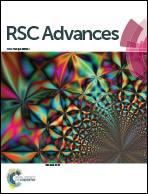Thermodynamic properties of pure and doped (B, N) graphene
Abstract
Ab initio density functional perturbation theory (DFPT) has been employed to study the thermodynamical properties of pure and doped graphene sheet and the results have been compared with available theoretical and experimental data. The concentration of B and N has been varied upto 50% of the carbon atoms in graphene. Phonon frequencies are essential ingredients entering into such a calculation, which have been computed by using the dynamical matrix provided by VASP software in combination with phonopy code in the harmonic approximation. This easily provides us with the Helmholtz free energy and leads us to numerical estimates of various thermodynamical properties. The results for specific heat are in good agreement with various theoretical and experimental studies obtained earlier for pure graphene. Interesting new results have been reported for B and N substituted structures. It has been observed that the specific heat decreases with the increase in concentration of doping while the entropy increases. Furthermore, large doping concentrations result in unstable sheets leading to imaginary frequencies in the transverse directions. The instability needs to be compensated by external strains and that has been assumed while carrying out Brilluoin summations. These results will be useful for calculations of thermal conductivity of doped graphene and thus feasibility of using these for device applications. Our preliminary results for thermal expansion have indicated negative thermal expansion behavior of pure graphene at low temperatures which needs investigation on doped graphene as well.


 Please wait while we load your content...
Please wait while we load your content...